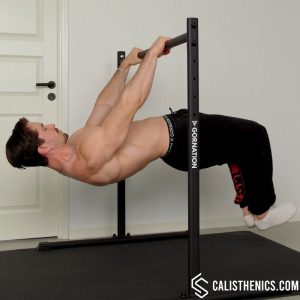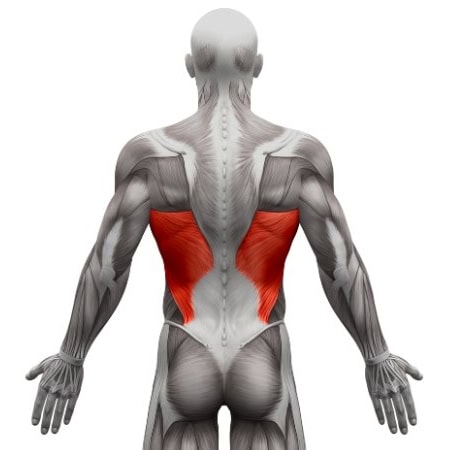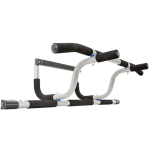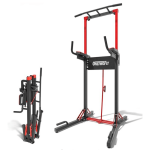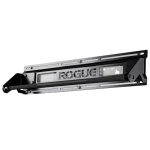Half Lay Front Lever
How to do Half Lay Front Lever?
The half lay front lever is an intermediate progression toward the full front lever. In this variation, the legs are kept together but bent at the knees, reducing the leverage and making it easier than the full front lever while still requiring significant core, back, and shoulder engagement. This is an excellent exercise for building strength and control before progressing to more advanced front lever variations.
Check out our ▶️ front lever training routine to unlock the full front lever!
The equipment used is the ▶️ Static Bar from GORNATION --> For 10% off use code CS10.
CREDIT: This video was prepared in collaboration with calisthenics athlete Simon Imhäuser who was performing the exercise in the video and calisthenics coach Daniel Flefil who shot and edited the video.
Steps to Perform a Proper Half Lay Front Lever:
1. Grip the Bar Securely:
• Use a shoulder-width overhand (pronated) grip on the pull-up bar.
• Ensure your wrists remain strong and not excessively bent.
2. Engage Your Core and Scapula:
• Depress your scapulae (shoulders down and back) to engage your lats and maintain stability.
• Keep your arms straight throughout the movement.
3. Lift into the Half Lay Position:
• Lean back while simultaneously bending your knees at about a 90-degree angle.
• Keep your thighs aligned with your torso, ensuring your body remains parallel to the ground.
4. Hold the Position:
• Squeeze your core, glutes, and legs together to maintain a tight, compact body position.
• Keep your hips, shoulders, and knees aligned in a straight horizontal line.
5. Maintain Full-Body Tension:
• Avoid letting your lower back arch or your knees drop too low.
• Keep your toes pointed and maintain tension throughout the movement.
6. Lower Back to the Starting Position:
• Slowly lower your body back to a dead hang with control, avoiding any swinging.
7. Repeat or Extend the Hold:
• Perform multiple holds or gradually increase hold duration as your strength improves.
Benefits of the Half Lay Front Lever
• Builds Core and Back Strength – Strengthens the lats and core for advanced calisthenics movements.
• Improves Full-Body Coordination – Requires controlled muscle activation from shoulders to toes.
• Great Intermediate Progression – Bridges the gap between the tuck and full front lever, allowing for steady progression.
• Enhances Shoulder Stability – Reinforces scapular control, reducing the risk of shoulder injuries.
• No Equipment Beyond a Bar – Requires only a pull-up bar or rings, making it a versatile bodyweight exercise.
Common Mistakes to Avoid
• Bending the Arms: Keep your elbows fully extended to maximize lat engagement.
• Letting the Hips Drop: Maintain a tight core to keep the body parallel to the ground.
• Shrugging the Shoulders: Keep your shoulders depressed to prevent excessive strain.
• Losing Full-Body Tension: Engage the glutes, core, and lats to maintain control.
• Using Momentum: Avoid swinging into the position; focus on a slow and controlled transition.
Tips for the proper execution of Half Lay Front Lever
Engage Your Entire Body: Keep your core, lats, glutes, and legs activated to maintain proper form.
Depress the Shoulders: Keep your shoulders down to prevent excessive strain and increase stability.
Maintain a Hollow Body Shape: Keep your lower back slightly rounded rather than arched.
Breathe Steadily: Inhale and exhale smoothly to stay relaxed and maintain control.
Avoid Bending the Arms: Keep your elbows locked to maximize lat engagement and avoid unnecessary strain on the biceps.
Muscles worked when doing Half Lay Front Lever
Primary Muscles:
•Latissimus Dorsi (Lats) – The primary muscle holding the position and controlling the movement.
•Core (Rectus Abdominis, Transverse Abdominis) – Provides stability and prevents sagging in the hips.
Secondary Muscles:
•Rhomboids and Trapezius – Assist in scapular control and shoulder stabilization.
•Biceps – Work isometrically to stabilize the arms.
•Erector Spinae – Helps maintain spinal alignment and resist gravitational pull.
•Glutes and Hip Flexors – Engage to keep the legs in position and maintain a compact hold.
Primary Muscle(s):
Secondary Muscle(s):
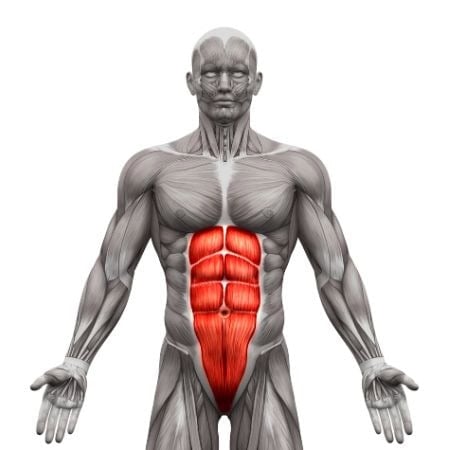
Abdominal
Adjust the difficulty of Half Lay Front Lever
How to make Half Lay Front Lever harder?
How to make Half Lay Front Lever easier?
How to make Half Lay Front Lever harder?
To make Half Lay Front Lever harder:
-
Increase Hold Duration: Extend your hold time to 15-30 seconds or longer for increased endurance.
-
Perform Controlled Repetitions: Instead of just holding, transition in and out of the half lay multiple times per set.
-
Straighten the Legs Gradually: Extend your knees slightly over time to progress toward the full front lever.
-
Use a Wider Grip: A wider grip increases the difficulty by reducing leverage and requiring more lat activation.
-
Perform Front Lever Raises: Start from a dead hang and raise into the half lay position, then return down slowly.
-
Use a Weighted Vest or Ankle Weights: Adding external resistance increases the strength demand on your lats and core.
How to make Half Lay Front Lever easier?
To make Half Lay Front Lever easier:
-
Use a Resistance Band: Loop a band around the pull-up bar and place it under your hips for extra support.
-
Perform a Tuck Front Lever First: Begin with a tucked front lever (knees closer to the chest) before progressing to the half lay.
-
Practice with Partial Holds: Instead of holding the full half lay position, practice shorter holds or partial lifts to build strength.
-
Perform Negatives: Start in a full half lay position and slowly lower yourself back to a dead hang with control.
-
Train Core and Pulling Strength Separately: Strengthen your core with hollow body holds and improve pulling strength with pull-ups and rows to build the necessary muscles.

